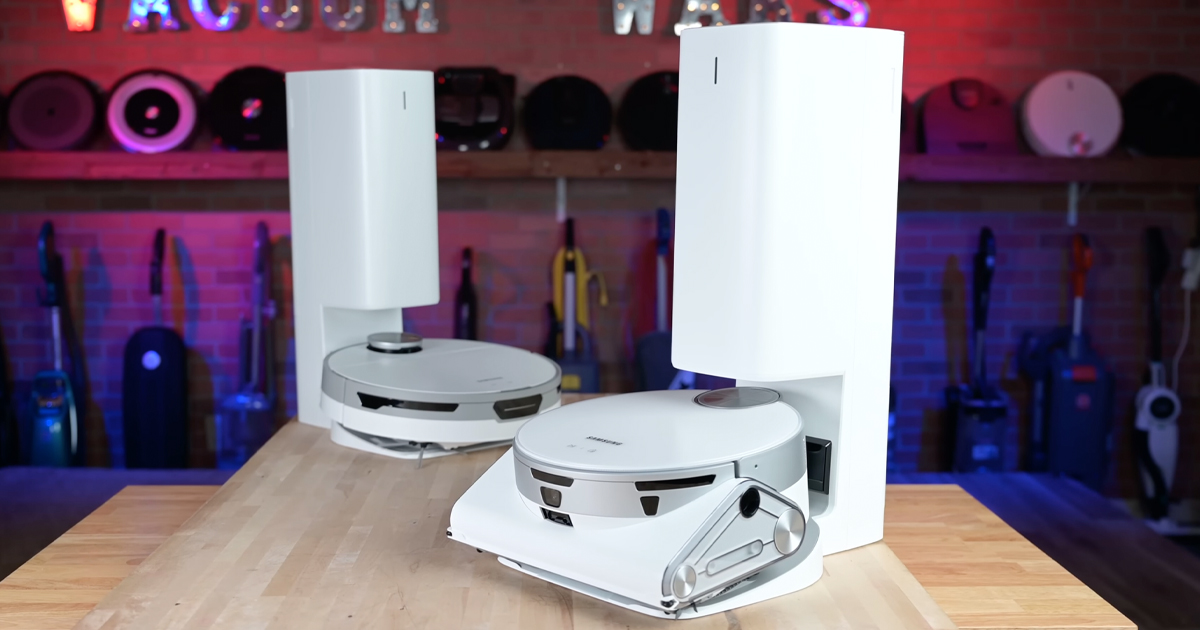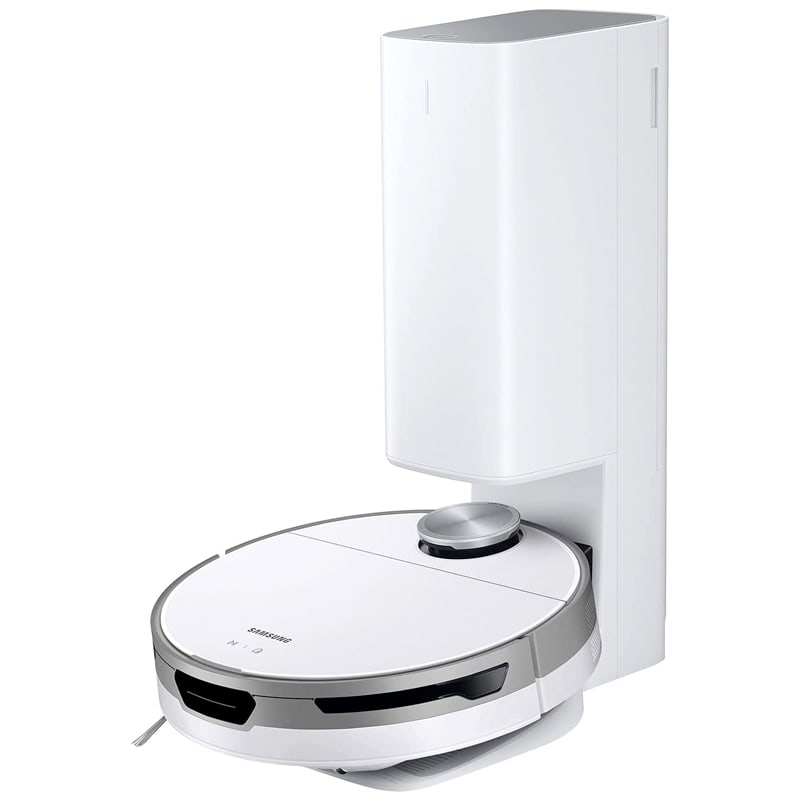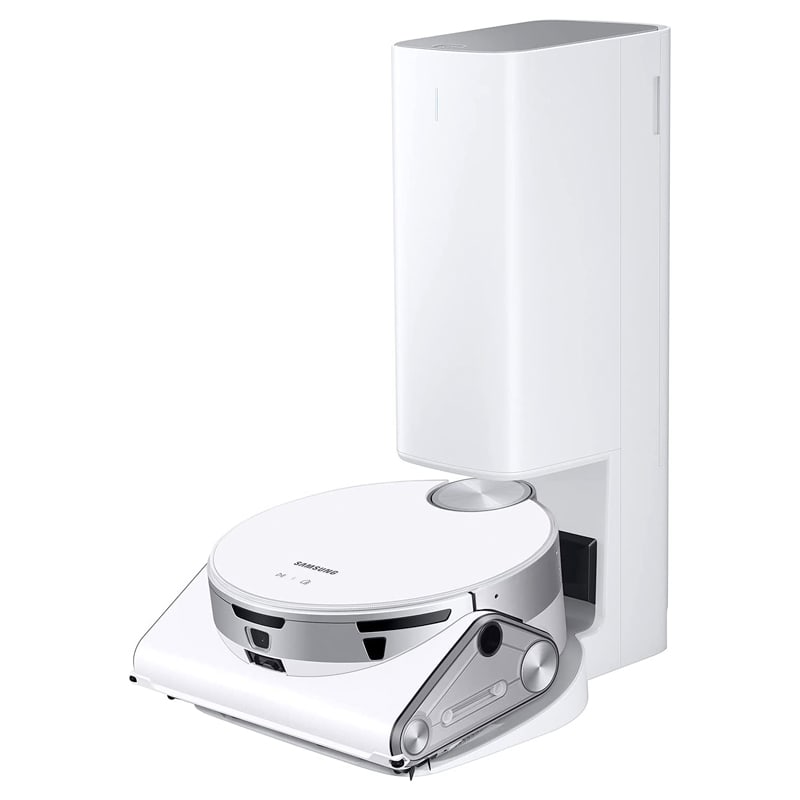This week, we’re reviewing and comparing two robot vacuums from Samsung: the Jet Bot+ and the Jet Bot AI+. We put them both through all kinds of tests to see how they compared to one another and how they compare to many other premium robot vacuums we’ve tested.
It’s been a while since Samsung put out a new robot vacuum, and both of these models represent a totally new design from their previous versions. Though there is a pretty significant price difference between these two models, they share some basic similarities.
What we like
LiDAR navigation
Both robot vacuums use LiDAR, which is a spinning invisible laser mounted on the top of the unit that helps the robot map out your house. Though there are pros and cons to using LiDAR over the camera-based systems that Samsung used previously, we prefer LiDAR. It’s all-but standard on the best robot vacuum models as it is the most precise system.
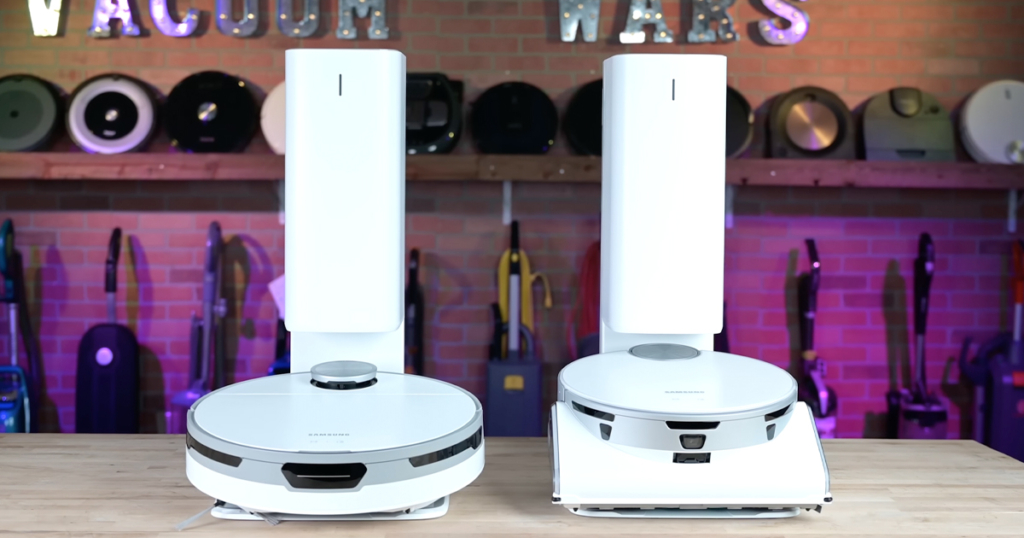
In our various tests, both the Jet Bot AI+ and Jet Bot+ had very efficient mapping. They mapped the house on the first try and they had near-perfect coverage in both the small and large room tests.
Clean Station
The “+” in the vacuum names means that they both have an auto-empty bin system, called the Samsung Clean Station, included in the package. These systems have become kind of a new thing in the robot vacuum world.
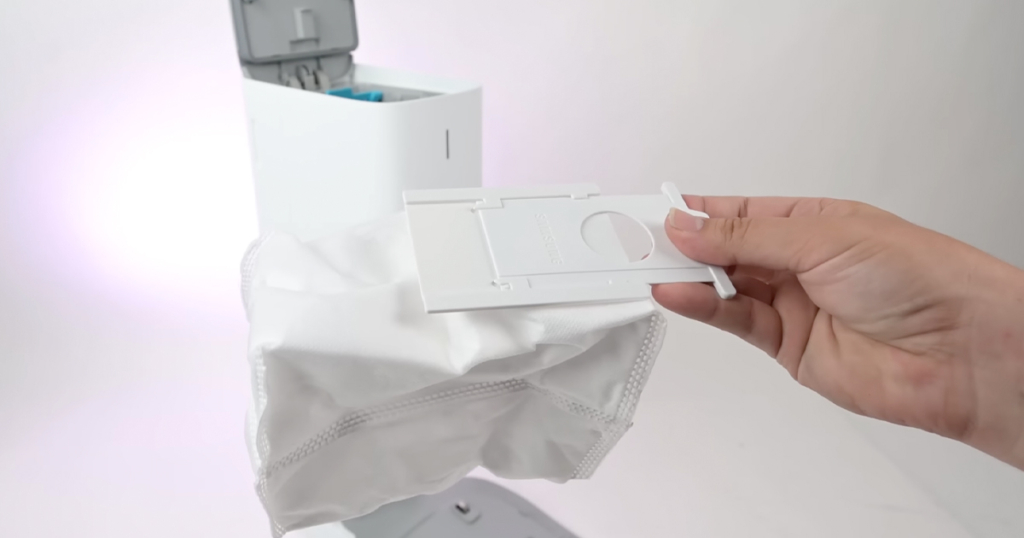
Samsung was one of the first brands to offer auto-empty with a few stick vacuums including their flagship Bespoke Jet Cordless model and we’re glad to see them available with their robot vacuums too.
When the robot finishes vacuuming, it automatically returns to its base to recharge, and when it does, a motor in the Clean Station turns on and sucks the debris from the robot’s dustbin into its included bag. The Clean Station is exactly the same on both units, so they are interchangeable with either robot.
Robot vacuum shopping?
Consider these Roborock models with similar features:
- Premium: S7 MaxV Ultra review
- Mid-Range with Mopping: Q7 Max+ review
Auto-empty dustbin design
We think Samsung’s Clean Station may be one of the best auto-empty dustbin designs we’ve seen so far. Whether it is the way the door is designed, the material of the door, or something we’re not seeing, it seems less prone to clogs than other auto-empty dustbins we’ve tested.
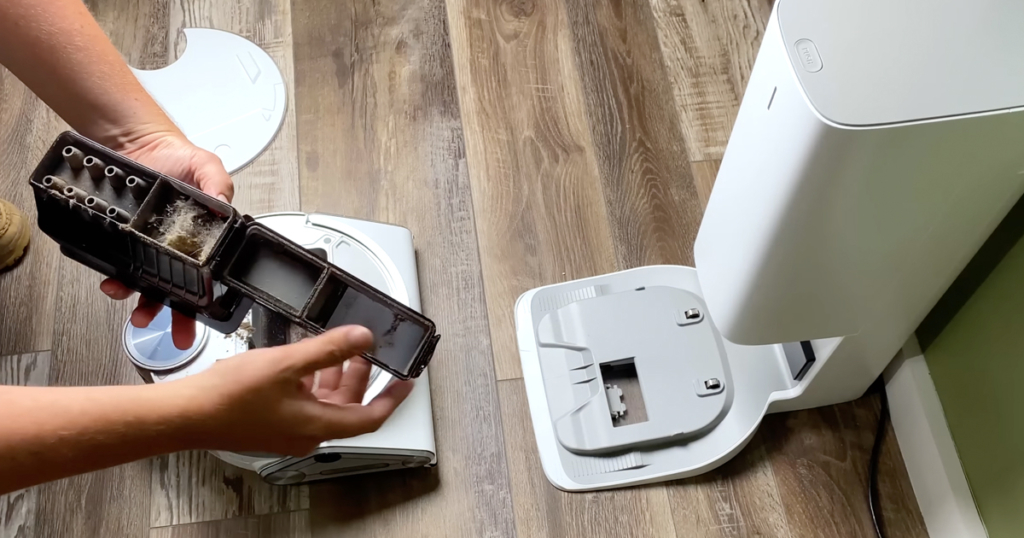
In our own real-world use, it handled a week’s worth of pet hair at our house, which is impressive. The 2.5-liter bags are well-designed; Samsung says they can hold three months’ worth of debris, depending on usage.
…with the crevice pickup test, they both did absolutely amazing, much better than a typical robot vacuum. But here, we think the reason was more about their soft roller system, which provided a near-perfect seal on hard floors, as opposed to their power specs.
Soft brushrolls
Another similarity is that they both had soft brush rollers instead of the usual rollers with bristles or something like it for agitation. We really like soft rollers for upright vacuums and cordless vacuums; there really is nothing better for getting large debris as well as super fine debris on hard surfaces.
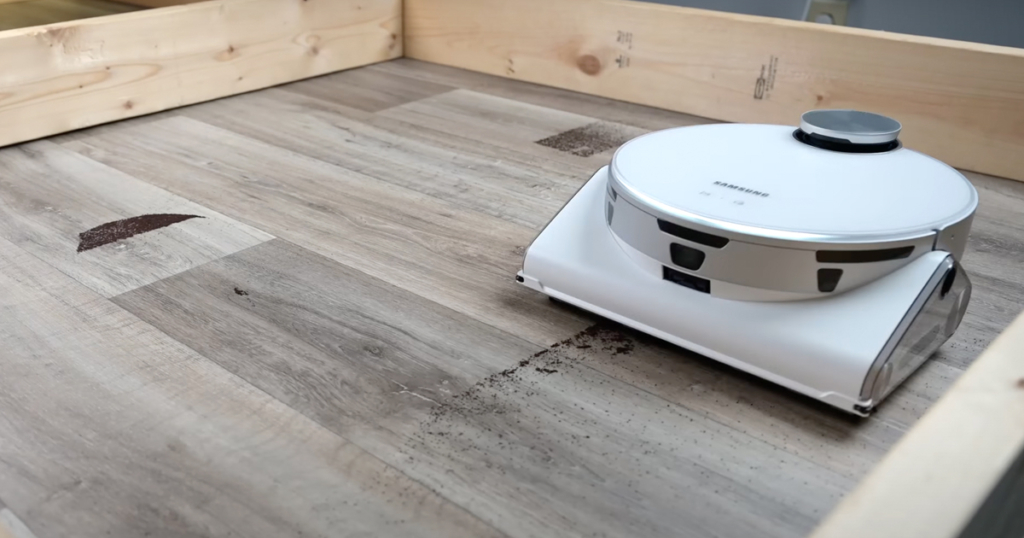
But we’ve never seen soft rollers in a robot vacuum before, and other than the fact that the Jet Bot AI+ has a much wider soft brush, both models did equally well with hard floors.
They performed particularly well with fine and heavy debris even on their lower power settings.
Top Robot Vacuums
Surface debris on carpet
They also did very well with picking up debris on the surface of carpets. There were, however, some issues with carpet deep cleaning, which we’ll talk about when we get to the negative stuff later on.
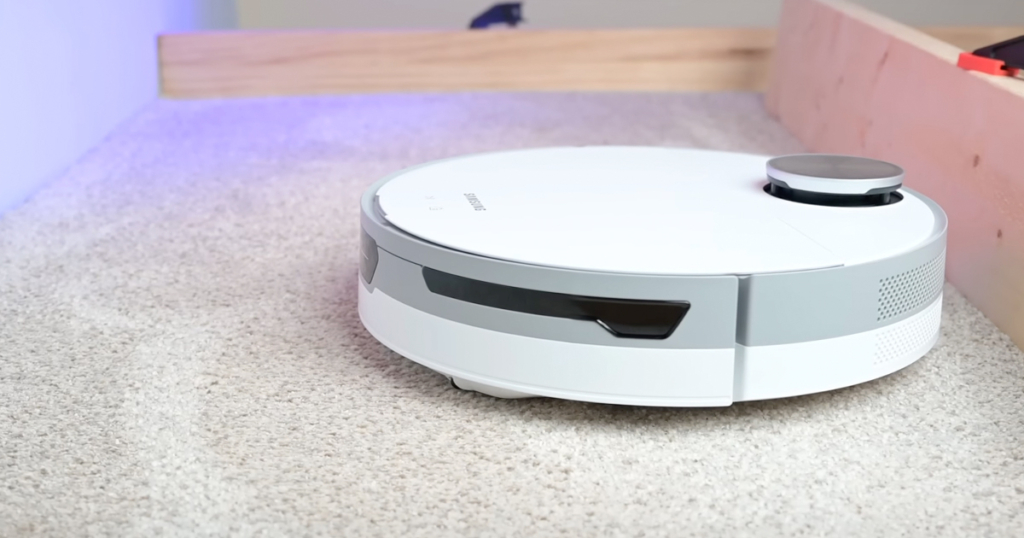
No-go zones and virtual walls
They both have one of our favorite features, where you draw lines or boxes on the map in the app to keep the robot from going where you don’t want it to go. These are commonly called no-go zones and virtual walls.
This is an important feature since it seems like every house has an area or two where the robot is likely to get stuck, like places with a lot of cords. And, they both did equally well with this feature, easily avoiding the areas that we blocked off in the app.
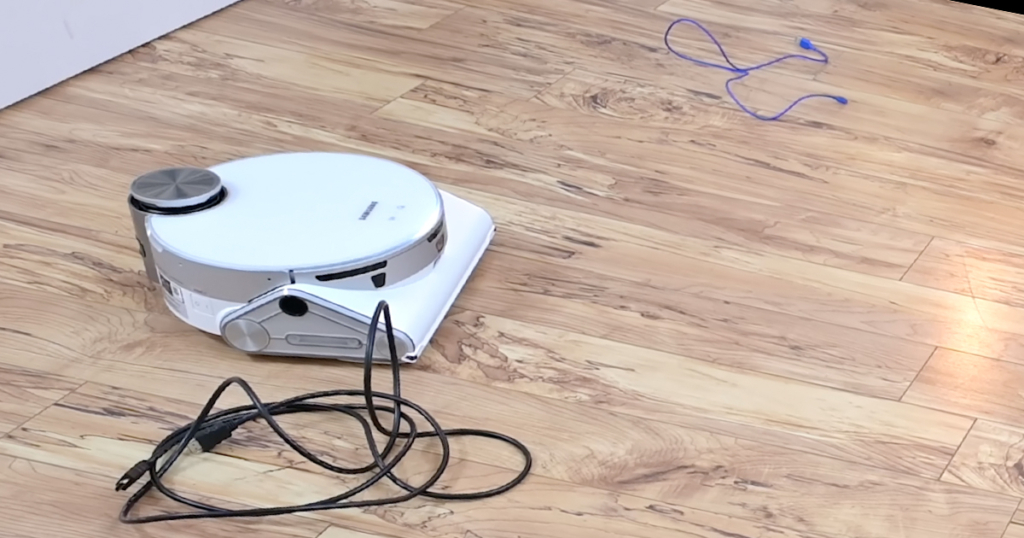
Obstacle avoidance (with vs without)
One of the big differences between these two robots is the obstacle avoidance system. The Jet Bot AI+, in addition to its LiDAR sensor for mapping, has a front-mounted camera to recognize obstacles that are too low or too light for its other sensors to detect. This gives it the ability to recognize these kinds of obstacles and to avoid them.
This is critical for avoiding things like cords, socks, and small toys. The Jet Bot AI+ avoided those things in the test, while the standard Jet Bot+ did not; it just plowed right over them. This is exactly what any robot vacuum without a front-mounted obstacle avoidance system would do.
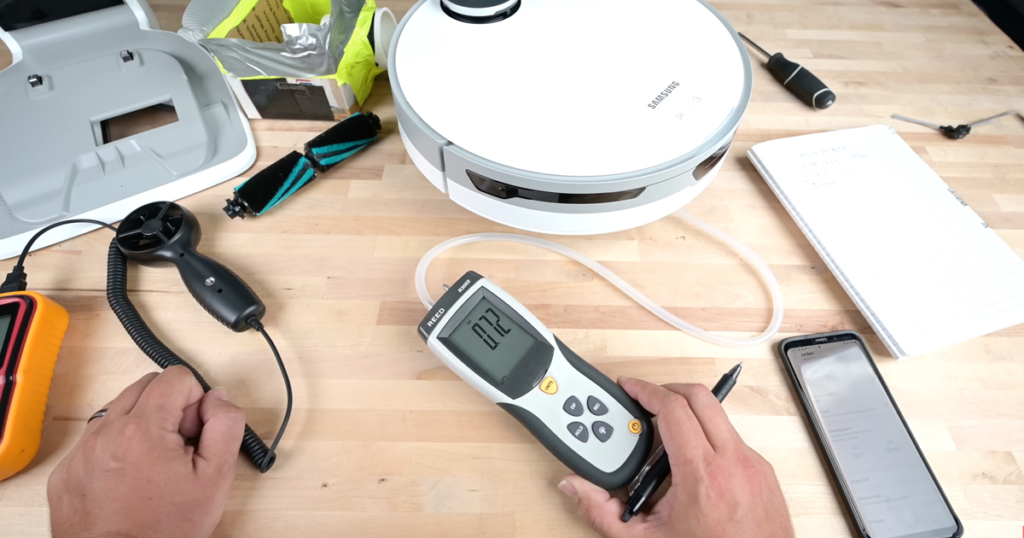
That being said, the Jet Bot and the Jet Bot AI have excellent IR and other sensors which seem to avoid taller objects incredibly well. For example, they both did much better than average with the cone navigation test, barely moving the cones at all, which is impressive.
Suction power and airflow
Samsung’s official specs show that the Jet Bot AI has quite a bit more suction than the Jet Bot, and in our tests, we did find that the Jet Bot AI+ had more suction than the standard Jet Bot+. But, we also found that the standard Jet Bot+ had more airflow than the AI+. These numbers are really good but about average for robots in this super-premium price range.
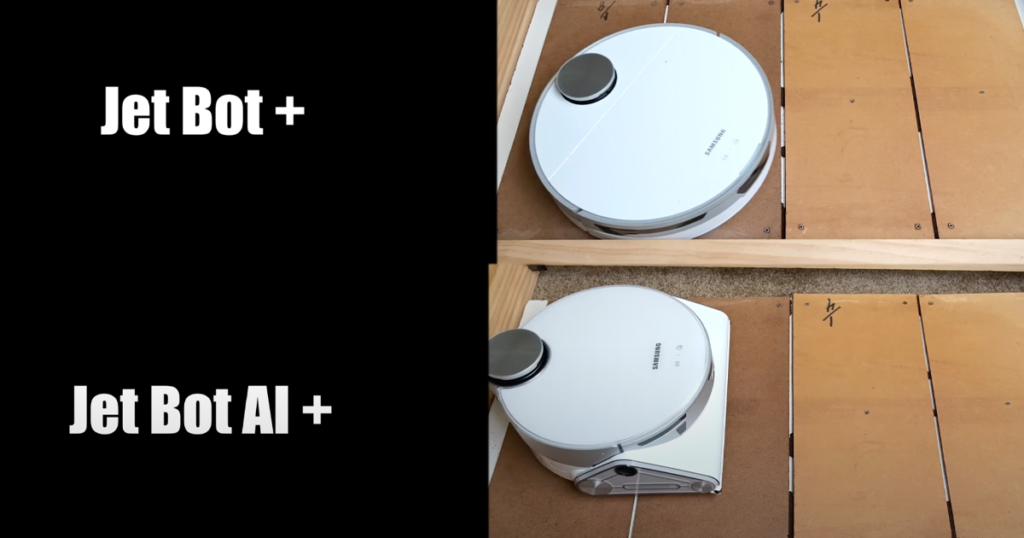
Crevice pickup test
In the various pickup tests, we found there to be a minimal advantage to the AI+’s additional suction because they both performed close to the same. This is probably due to their similar hardware.
For example, with the crevice pickup test, they both did absolutely amazing, much better than a typical robot vacuum. But here, we think the reason was more about their soft roller system, which provided a near-perfect seal on hard floors, as opposed to their power specs.
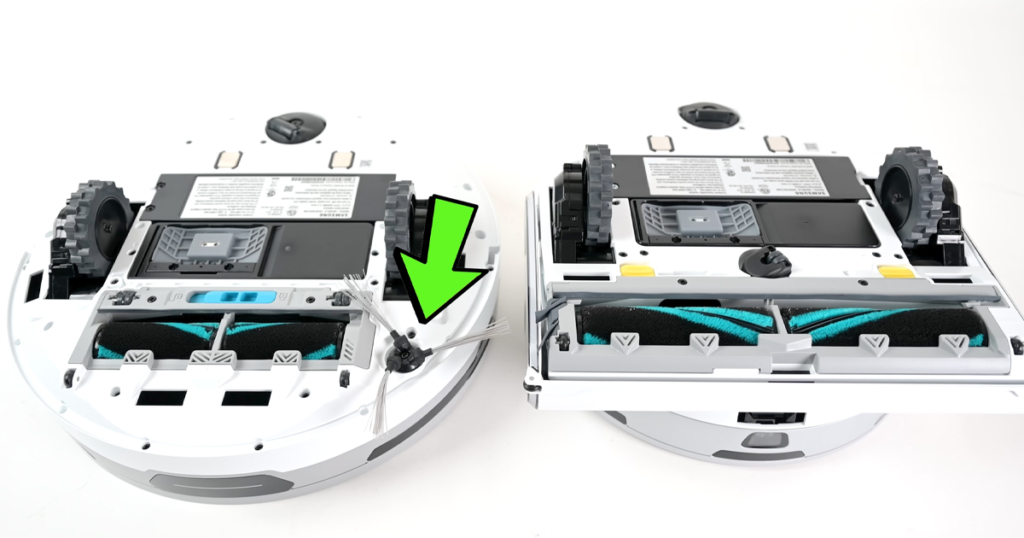
Brushes, cameras, and sensors
They use slightly different mechanisms for vacuuming. Besides the size of the main brush being smaller on the Jet Bot+, it also has a side brush, whereas the Jet Bot AI+ does not. Instead, the AI+ uses its cameras and other sensors to clean very close to the corners. But in the end, it seems to amount to the same results.
Home monitoring
The Jet Bot AI+ can also be used as a kind of home monitoring system. You control it remotely with your smartphone from wherever you are with an on-screen joystick. You can use it to check on your pets, or at least the pets that are curious enough not to run away from it.
What could be improved
Moving on to the negative stuff, the first thing is carpet agitation. As we said, the rollers on both of these robots are soft, so they don’t agitate carpets like traditional brush rollers do. As a result, their ability to clean deep down embedded dirt in carpets was below average.
Deep cleaning carpet
For example, in the carpet deep clean test, where we embed sand into medium pile carpet and weigh the bins before and after, the Jet Bot+ scored a 55, and the Jet Bot AI+ (with the additional suction) scored a 60 on max power. Both numbers are significantly below the average score of about 72, which is the average from our testing of about 50 other robot vacuums in this way.
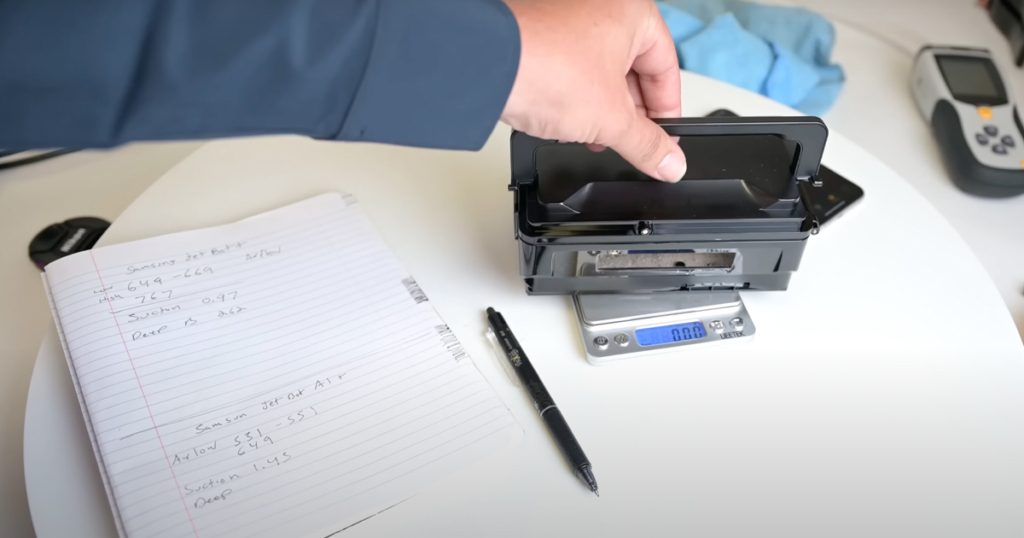
Again, as we mentioned earlier both did pretty well with picking up debris from the surface of carpets. They even picked up fine debris well, but they didn’t get that deep down dirt as effectively on carpet. Basically, the design seems to be tailor-made for hard floors. It can work fine for carpets, but it’s probably not what you would want if you had mostly carpets in your home.
Hair tangles
Another thing we didn’t like was hair tangles. We found both robots did fine with short hair, like pet hair, but when it came to longer human hair, it got tangled. Scores in both the five and seven-inch tests were below average, and hair got really tangled around the center of the brushes. It’s worth noting that it was difficult to remove that tangled hair, too.
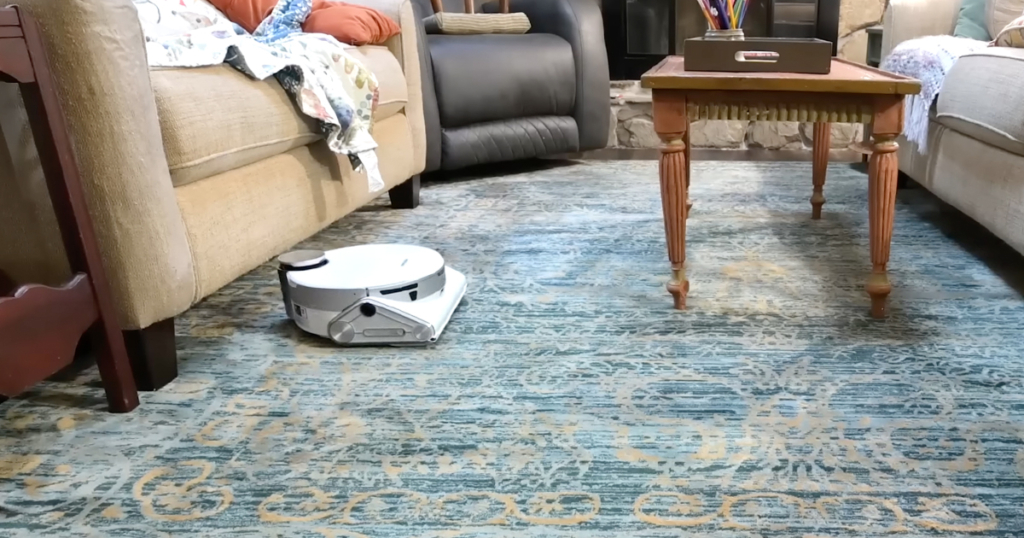
Height of the Jet Bot AI+ model
The Jet Bot AI+ is very tall compared to the regular version. This meant that it was unable to get under a lot of furniture in our test house, whereas the standard Jet Bot+ had no problem. So, if you have a lot of low-clearance furniture, the AI+ might not be the best choice for you.
Price
Finally, the price is a factor. The Jet Bot AI+ is considerably more expensive than the standard Jet Bot+. While the AI+ has some added benefits like the obstacle avoidance system, the home monitoring feature, and slightly better suction, you have to consider if those features are worth the extra cost for your specific needs.
| Feature | Jet Bot+ | Jet Bot AI+ |
|---|---|---|
| LiDAR Navigation | Yes | Yes |
| Auto Empty Bin (Clean Station) | Yes | Yes |
| Soft Brush Rollers | Yes | Yes |
| Suction Power | Good | Better |
| Airflow | Better | Good |
| Obstacle Avoidance System | No | Yes |
| Home Monitoring | No | Yes |
| Side Brush | Yes | No |
| Shape | Round | D-shaped |
| Main Brush Size | Smaller | Larger |
| Height | Shorter | Taller |
| Carpet Deep Cleaning | Below Average | Below Average |
| Hard Floor Cleaning | Excellent | Excellent |
| Hair Tangle Resistance | Below Average | Below Average |
| Price | Lower | Higher |
| Link | Amazon | Amazon |
Our conclusion
In conclusion, both the Samsung Jet Bot+ and Jet Bot AI+ are premium robot vacuums with some impressive features. They excel on hard floors and surface debris on carpets, but they may not be the best choice if you have mostly carpets or a lot of long hair to deal with.
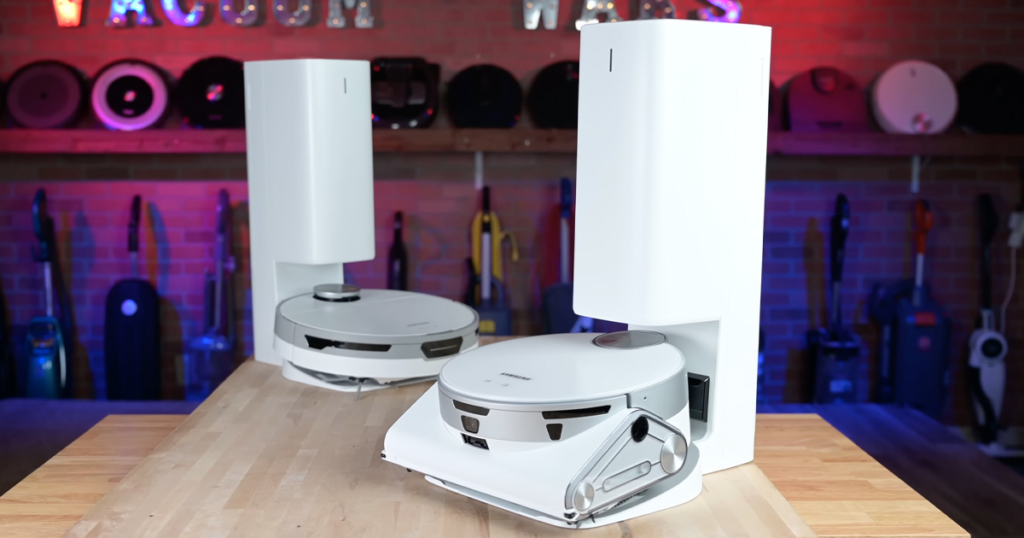
If you don’t mind the price, the Jet Bot AI+ does offer some additional benefits, but for many people, the standard Jet Bot+ could be more than sufficient.
Ultimately, you’ll need to weigh the pros and cons to determine which robot vacuum is the best fit for your home and your specific requirements.
